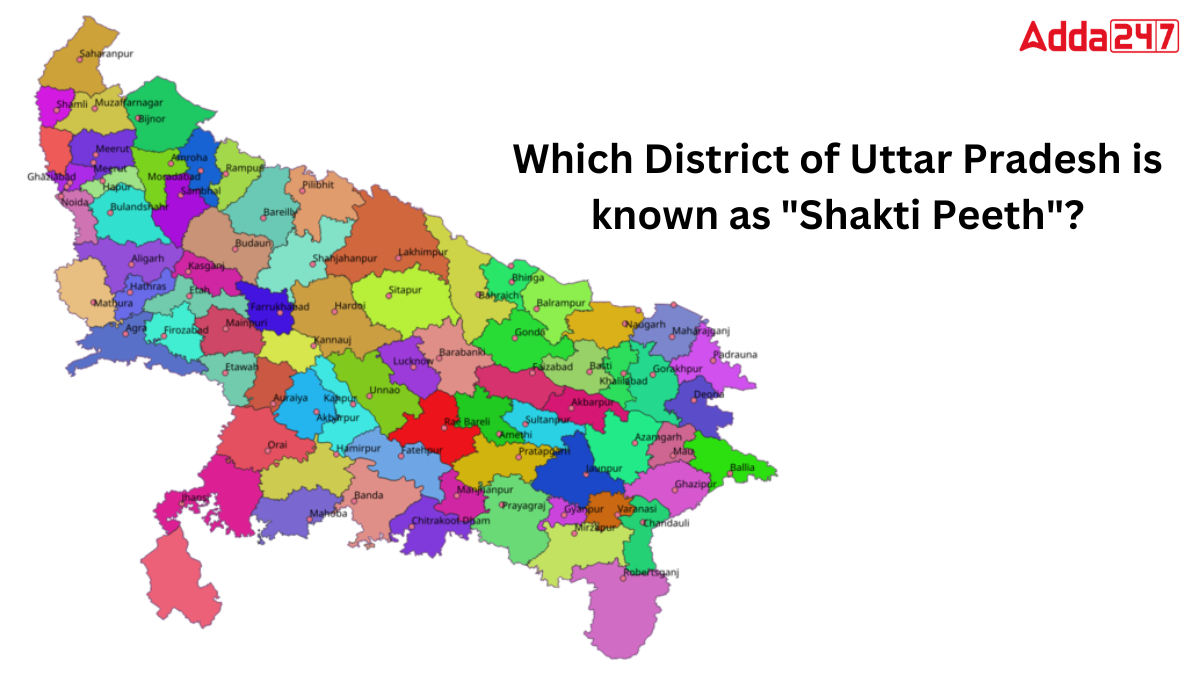Uttar Pradesh, the most populous state in India, is known for its rich cultural heritage and spiritual significance. Among its many sacred sites, Balrampur stands out as the “Shakti Peeth of Uttar Pradesh.” In this article, we will explore why Balrampur is considered a Shakti Peeth and its importance in Hindu mythology.
An Overview of Uttar Pradesh
Uttar Pradesh is India’s most populous state, with over 241 million residents, accounting for 16.5% of the country’s population. Covering an area of 243,286 km², it borders several states and Nepal. The state capital is Lucknow, while Prayagraj serves as the judicial capital. Major rivers include the Ganges and Yamuna, meeting at the Triveni Sangam, a significant Hindu pilgrimage site. Agriculture thrives here, with 82% of the land cultivable.
Administrative Divisions of Uttar Pradesh
Uttar Pradesh is notable for having the largest number of districts in India, with a total of 75. The state also comprises 28 development authorities, 5 special area development authorities, 351 tehsils, and 17 municipal corporations. This comprehensive administrative structure highlights the state’s intricate governance and significance.
Largest and Smallest Districts of Uttar Pradesh
Lakhimpur Kheri is the largest district in Uttar Pradesh, spanning 7,680 square kilometers. In contrast, Hapur is the smallest district, measuring only 660 square kilometers. Noteworthy districts include Ballia, the easternmost; Saharanpur, the northernmost; Sonbhadra, the southernmost; and Shamli, the westernmost district in the state.
Which District of Uttar Pradesh is known as “Shakti-Peeth”?
In Uttar Pradesh, Balrampur is known as a Shakti Peeth, primarily due to the Devi Patan Temple, dedicated to Goddess Durga. Additionally, other districts such as Varanasi and Gorakhpur also have significant temples and sites associated with Shakti Peeths, attracting pilgrims seeking blessings and spiritual connection within the rich tapestry of Hindu mythology.
Why is Balrampur known as “Shakti Peeth”?
Balrampur is renowned as a Shakti Peeth due to the famous Devi Patan Temple, located in Tulsi Pur, around 27 kilometers from the district headquarters. This temple is dedicated to Goddess Durga and is considered one of the 51 Shakti Peeths mentioned in Hindu mythology. Pilgrims from across the country visit the temple to seek blessings from the goddess.
Significance of Devi Patan Temple
According to Hindu legend, the Devi Patan Temple is where a part of Goddess Sati’s body fell during Lord Shiva’s Tandav dance, making it a sacred place of worship. The temple is a spiritual center for Hindus and holds immense religious importance.




 Which Country is Known as the Land of Ch...
Which Country is Known as the Land of Ch...
 Which Bird is known as the King of Birds...
Which Bird is known as the King of Birds...
 Which City of Austria is Known as the Ci...
Which City of Austria is Known as the Ci...







